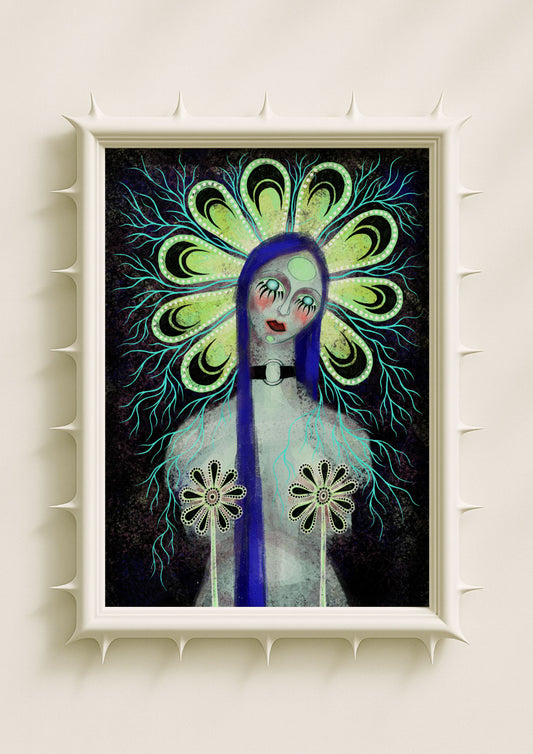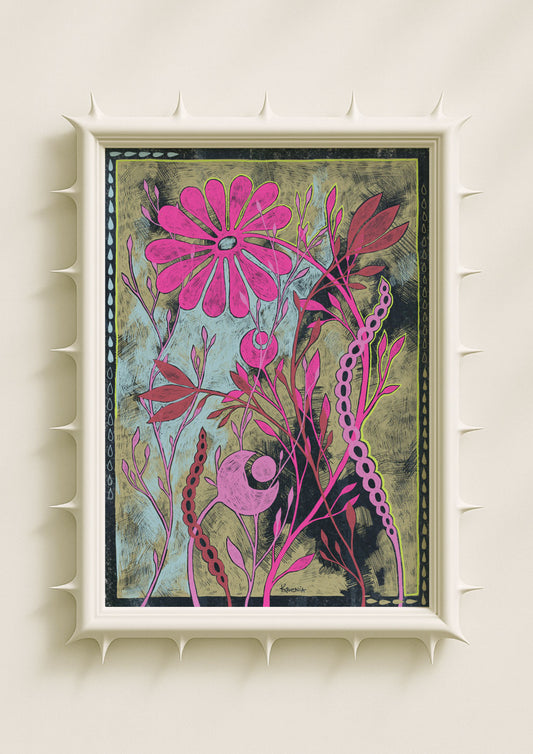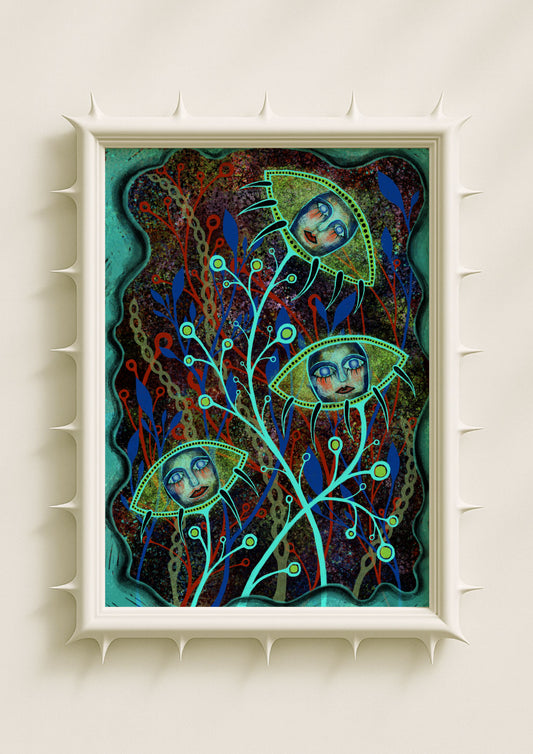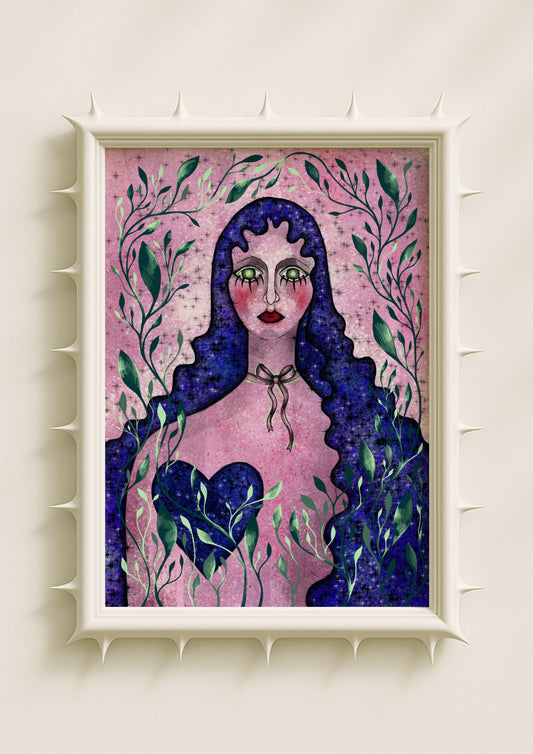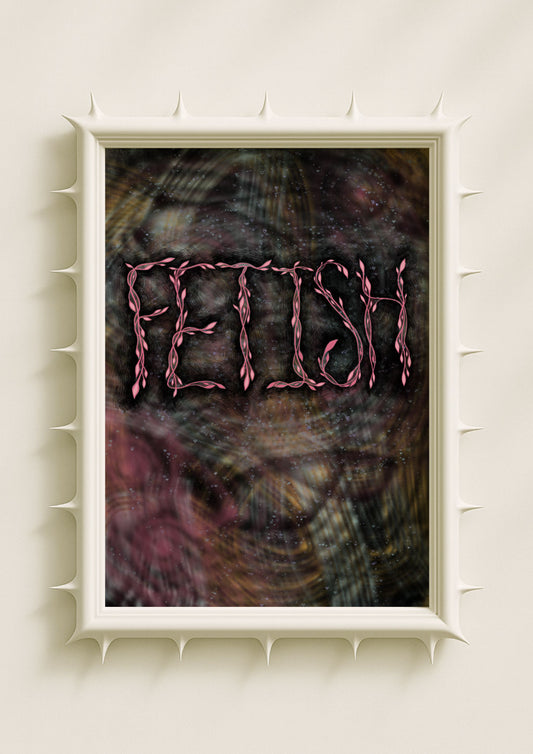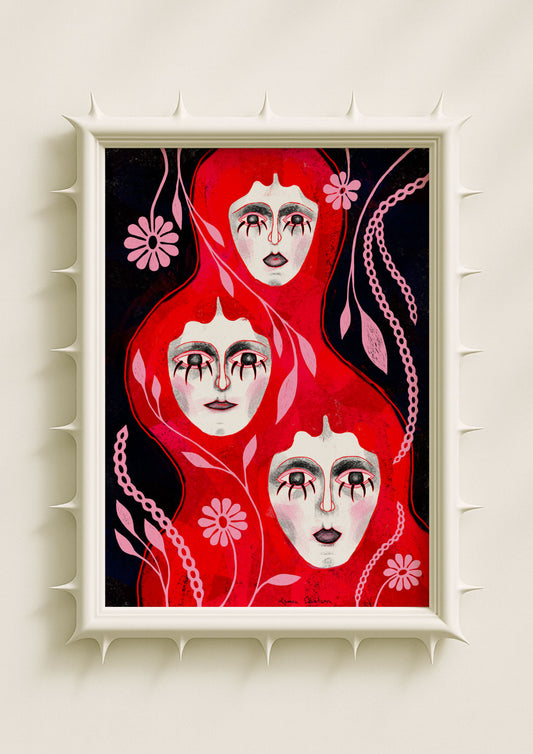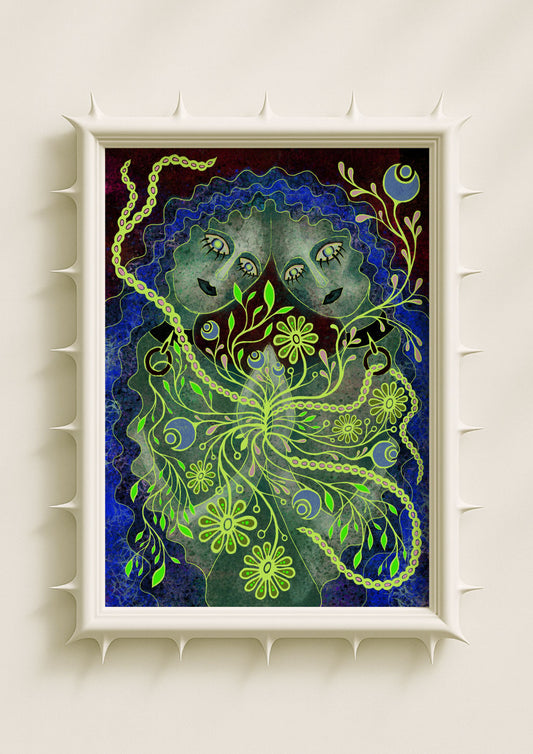Some interiors feel like a single idea, clean and straightforward. Others feel like a life — unfolding gradually, full of textures, contradictions, colours, memories, impulses, and secrets. The people drawn to this second kind of space usually carry that same layered nature within themselves. They are the eclectic souls: curious, emotionally sensitive, open to both beauty and complexity, and naturally inclined toward visual storytelling in all its forms.

For someone like this, a room can never be just functional. It becomes a reflection of inner life, a kind of psychological landscape where objects and artworks act as markers of feeling. Layered aesthetics — maximalist, bohemian, surreal, or quietly chaotic — allow all these aspects of identity to coexist. When I create art for homes like these, I think about emotional density. I imagine how a single poster might hold beauty, memory, tension, softness, dream, and honesty all at once. People who love eclectic spaces rarely look for perfection. They look for resonance.
The Psychology Behind Layered Spaces
An eclectic interior mirrors the way complex minds think. Emotions rarely arrive as clean lines; they arrive layered, sometimes contradictory, always shifting. A person who gravitates toward richly decorated spaces is often someone who wants an environment that feels alive, not staged. They prefer details that reveal themselves slowly and objects that carry stories. A room like this never feels finished in the traditional sense. Instead, it continues to evolve over time, just as the person living in it does. Every added shape or texture becomes another chapter.
Why Eclectic Souls Love Symbolic Art
Symbolism sits naturally inside eclectic environments because it leaves space for interpretation. A symbolic portrait, a surreal botanical print, or a slightly offbeat composition can carry meaning that is emotional rather than literal. When I work on pieces like this, I try to keep that layered quality alive. A face might be tender but outlined with a sharper graphic line. Florals may drift in unexpected directions, behaving more like thoughts than plants. Colours may fade into each other in ways that feel instinctive, as if they represent emotional weather rather than a scene. People with eclectic tastes respond to this openness. They recognise themselves in images that don’t explain everything immediately.

The Comfort of Mixed References
Eclectic sensibility often comes from the way someone experiences the world. They might love literature and old cinema, but feel equally drawn to contemporary photography and folklore. They might feel at home with Guillermo del Toro’s dark tenderness or Tim Burton’s whimsical edge, and then shift effortlessly to something rooted in Latin American atmosphere or European restraint. This natural blending of influences finds a home in eclectic décor. A poster that mixes graphic lines with soft surreal florals or a portrait that feels both dreamy and quietly rebellious fits into this world with ease. Nothing feels out of place because the logic is emotional, not stylistic.
Layering as Emotional Honesty
A layered interior often reveals a truth that minimalism cannot: that identity is not linear. Eclectic souls embrace the coexistence of softness and intensity, nostalgia and curiosity, melancholy and humour. They understand that a space feels more honest when it carries traces of the past alongside impulses of the present. In my own artwork, I rarely settle into a single mood. A piece might hold gentleness and sharpness, stillness and tension, all moving together. That emotional layering naturally becomes visual layering. It reflects the way people actually feel rather than how they think they should feel.
How Wall Art Shapes an Eclectic Room
Wall art becomes an anchor for eclectic interiors. A surreal floral piece can introduce a sense of flow. A maximalist portrait adds emotional temperature. An edgy composition brings contrast and spark. Together they form a kind of constellation, a map of the person who chose them. These rooms aren’t random collections of objects; they form a portrait of a mind that embraces contradiction and finds beauty in diversity. The artwork ties everything together, creating atmosphere and rhythm.

The Beauty of a Collected Life
Layered aesthetics attract complex minds because they feel truthful. None of us are defined by one emotion, one memory, one style, or one era of our lives. We are shaped by everything — the films we loved as teenagers, the books that changed us, the moments that marked us, the scents that comfort us, the images we can’t forget. An eclectic room becomes the physical expression of this collected life.
A space like this doesn’t apologise for its abundance. It celebrates it. Emotionally rich people don’t choose layered aesthetics out of indecision. They choose them because they experience life intensely and want their surroundings to carry that same sense of aliveness. An eclectic room is not a decoration choice; it is a form of emotional truth.
